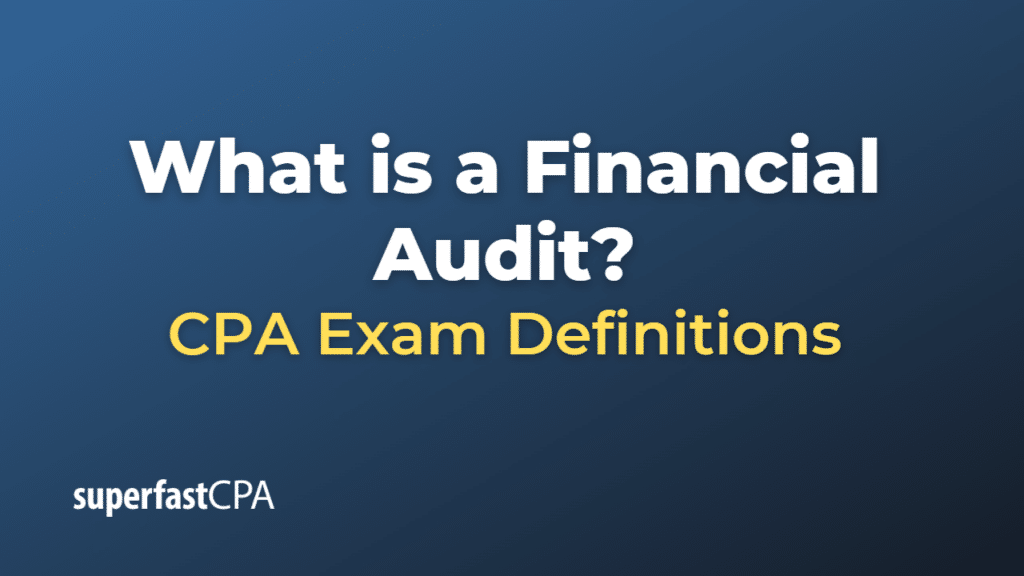Financial Audit
A financial audit is a formal, systematic review or examination of an organization’s financial statements and the processes used to produce them. This process is performed by a third-party auditor who is independent of the organization being audited.
The main purpose of a financial audit is to provide an objective assessment of the financial statements, which can enhance their reliability and credibility. Auditors check the accuracy of financial reports, review the fairness of financial statements, and ensure that they are prepared according to generally accepted accounting principles (GAAP) or International Financial Reporting Standards (IFRS).
The auditor’s findings are presented in an audit report. This report includes the auditor’s opinion on the fairness and accuracy of the financial statements, whether they comply with relevant accounting standards and laws, and any significant issues found during the audit.
Audits can be compulsory or voluntary. Publicly traded companies are required by law to have their financial statements audited annually to protect shareholders and the public. On the other hand, private companies, not-for-profits, and government agencies might choose to conduct audits to demonstrate their financial accountability and transparency.
Financial audits are critical for ensuring trust in the financial reporting system and are a key component of corporate governance.
Example of a Financial Audit
Let’s imagine a scenario where a public company, TechGrowth Inc., is undergoing its annual financial audit:
- Preparation: At the end of its fiscal year, TechGrowth prepares its financial statements, including the income statement, balance sheet, and cash flow statement.
- Selection of Auditor: TechGrowth’s audit committee, which is a part of its board of directors, selects an independent auditing firm to conduct the audit. They choose XYZ Auditing, a well-regarded auditing firm that has no conflicts of interest with TechGrowth.
- Planning: XYZ Auditing meets with TechGrowth’s management to discuss the scope of the audit, the timeline, and any areas of concern that may require special attention.
- Execution: Over the course of several weeks, the auditors from XYZ examine TechGrowth’s financial statements and the accounting systems used to create them. They look for any inaccuracies or inconsistencies and verify a sample of transactions by cross-referencing them with supporting documents.
- Findings: XYZ Auditing finds that TechGrowth’s financial statements present an accurate and fair representation of its financial condition and comply with GAAP. However, they do suggest some improvements to internal controls to reduce the risk of errors in the future.
- Audit Report: XYZ Auditing issues an audit report, expressing an “unqualified” or “clean” opinion. This means that TechGrowth’s financial statements are considered reliable. They also include their suggestion about improving internal controls in the report. This report is then shared with TechGrowth’s shareholders and made public as a part of TechGrowth’s annual report.
Please note that this is a simplified example. A real financial audit can be much more complex and time-consuming, depending on the size and complexity of the company being audited.













